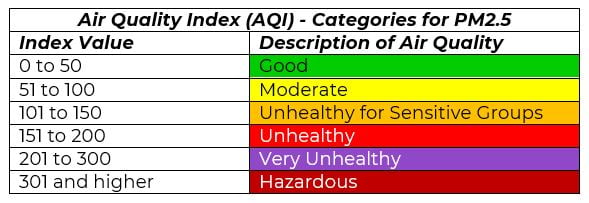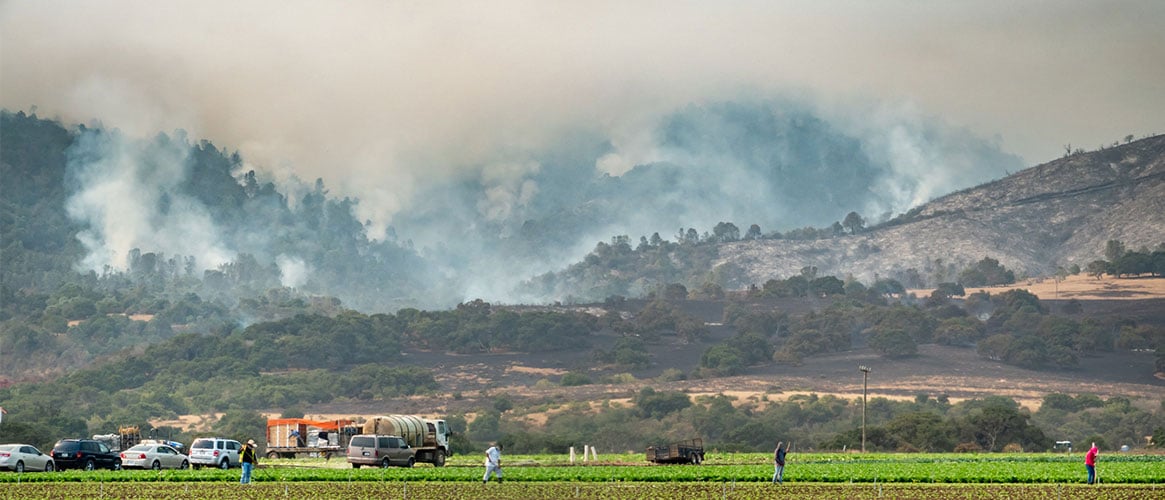Cal/OSHA’s wildfire smoke regulation aims to protect your outdoor workers from the hazards of breathing in wildfire smoke. With few exceptions, the regulation applies to all businesses with employees that spend a significant amount of time working outdoors or in vehicles without air conditioning. There are some exemptions to the regulation, which include:
- Enclosed buildings or structures where air is filtered by a mechanical ventilation system with windows/doors kept closed
- Enclosed vehicles that have a cabin air filter with windows and doors kept closed
- Where exposure to the Air Quality Index (AQI) for particulate matter 2.5 (PM 2.5) of 151 or greater is one hour or less during a shift
- Firefighters engaged in wildland firefighting
Employer requirements
Employers are required to take steps to protect workers from wildfire smoke. Before a wildfire smoke situation in your area, make sure to follow these steps:
- Implement a system for communicating to employees about wildfire smoke hazards
- Provide effective training to employees that covers:
- The health effects of wildfire smoke
- How to obtain the current AQI for PM2.5
- How you will communicate to employees about harmful AQI and how you will protect them from wildfire smoke
- How employees should inform you or a supervisor of worsening air quality or if they are experiencing any symptoms due to the air quality
- How to properly use N95 respirators
- The importance, limitations, and benefits of using a respirator when exposed to wildfire smoke
Our webinar, Protection from Wildfire Smoke, can help you train your employees on the regulation and how best to protect themselves.
Control harmful exposures when wildfire smoke is in the work area

Checking the AQI each day helps you stay up to date on the conditions so you can help your employees avoid breathing in toxic air.
Monitor the AQI for PM 2.5. Monitoring for AQI needs to be done in the area of your worksite at the start of each shift and periodically thereafter. There are many free resources available for monitoring the air quality such as U.S. EPA Air Now and the California Air Resources Board.
If the AQI is above 150 for PM 2.5, consider changing work schedules, reducing work intensity, moving work to a less affected outdoor location, or temporarily suspending outdoor work. If employees must work outdoors when the AQI is above 150, provide respirators—rated N95 or above—for employees’ voluntary use.
If the AQI is above 500 for PM 2.5 at an outdoor worksite, the employer must provide and require employees to use NIOSH-approved particulate respirators—N95 or above—that will reduce employee exposure to the smoke.
Cal/OSHA offers additional guidance for employers and workers on wildfire smoke as well as frequently asked questions about N95 masks. Cal/OSHA’s Training Academy offers free resources in English and Spanish.
